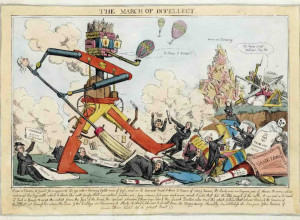Library of Congress Acquires American Ballet Theatre Archives
The Library of Congress has acquired the American Ballet Theatre’s vast archives and will open a celebratory exhibition about the dance company on Aug. 14.
"American Ballet Theatre: Touring the Globe for 75 Years" will be displayed in the foyer of the Performing Arts Reading Room in the Library’s James Madison Memorial Building, 101 Independence Ave. S.E., Washington, D.C. The exhibit is free and open to the public from 8:30 a.m. to 5 p.m., Monday through Saturday, starting Thursday, Aug. 14. Also starting Aug. 14, the exhibit can be viewed online at www.loc.gov/exhibits/.
The exhibition will close on Saturday, Jan. 24, 2015. It will then travel to Los Angeles, opening at the Walt Disney Concert Hall in its Library of Congress Ira Gershwin Gallery in March 2015 and running through August 2015.
American Ballet Theatre, which is celebrating its 75th anniversary this year, has donated its archives, more than 50,000 items of visual and written documentation, to the Library. The collection—known as the American Ballet Theatre Collection at the Library of Congress—will enhance and complement the Library’s many other dance, theater and music collections held in its Music Division, including the papers of composers Leonard Bernstein, Aaron Copland and Morton Gould, set designer Oliver Smith and choreographer Bronislava Nijinska.
"This is a major and important addition to the Library’s dance collections," said Susan Vita, chief of the Library’s Music Division. "American Ballet Theatre has historically brought a diverse, classical and uniquely American artistic expression to towns and cities throughout the globe. The ABT archives is unique in that it connects with so many of our major collections of composers, choreographers, set and lighting designers, and orchestrators. It is a thrill to have America’s Ballet Company’s archives as a centerpiece collection in America’s Library."
The comprehensive archives includes photographs; Benesh Movement Notation notes and scores; music manuscripts; programs; clipping files; touring files; business papers; and information on grants and development, marketing and public relations, office administration and other memorabilia collected by the company, former dancers and ballet fans during the past 75 years. The collection is available to researchers by appointment. Please contact the Performing Arts Reading Room two weeks prior to arrival: www.loc.gov/rr/askalib/ask-perform.html.
The Library’s exhibition will highlight American Ballet Theatre’s vibrant history, focusing on the dance company’s early years, national and international touring, embrace of innovative contemporary ballets as well as traditional repertoire, diversity of artists, and the future of the company. The exhibition will serve as a small sample of the large collection. The 43 artifacts on display will include photographs, scores, costume sketches, posters and programs. In addition, a five-minute film of selected clips, produced for the exhibition by Ric Burns and Steeplechase Films, will be on view.
During its 75 years, American Ballet Theatre has performed more than 450 works created by more than 150 choreographers. In 1939, a group of dancers, choreographers and producers associated with Russian-born Mikhail Mordkin’s ballet company joined together to establish a new, innovative dance company called Ballet Theatre. Their aim was to develop the best ballets from the past and to encourage the creation of new works by gifted young choreographers, who could bring a fresh, American style to the art form. Under the direction of Lucia Chase and Oliver Smith from 1940 to 1980, the dance company achieved its goal.
Early in its organization, Ballet Theatre—renamed American Ballet Theatre in 1957—began to tour, representing the United States both domestically and internationally, bringing its varied repertoire to a broad audience.
American Ballet Theatre’s repertoire includes all of the great full-length ballets of the 19th century, such as "Swan Lake, "The Sleeping Beauty" and "Giselle," the finest works from the early part of the 20th century by choreographers George Balanchine, Michel Fokine, Antony Tudor and Agnes de Mille, and contemporary masterpieces by choreographers Paul Taylor, Twyla Tharp and Merce Cunningham.
When Russian ballet dancer Mikhail Baryshnikov served as artistic director from 1980 to 1989, the ballet company experienced a strengthening and refining of the classical tradition. He was succeeded in 1990 by Jane Hermann and Oliver Smith, who maintained the great traditions of the past while pursuing an innovative future. Since October 1992, former American Ballet Theatre Principal Dancer Kevin McKenzie has served as artistic director. McKenzie is committed to maintaining the dance company’s vast repertoire and to bringing the art of dance theater to the great stages of the world.
Starting this fall in New York, American Ballet Theatre will kick off a 15-month-long 75th anniversary celebration by presenting works closely associated with the ballet company’s history. For further information, visit www.abt.org.
The Library of Congress Music Division, with more than 21 million items, holds the world's largest music collection. Particular areas of strength include opera (scores and librettos), stage and screen musicals, chamber music, jazz and American popular song. The Music Division is home to approximately 600 archival collections, most of them the personal papers (including music scores as well as correspondence, photographs, legal and financial documents, programs, clippings and other materials) documenting the lives and careers of stellar composers and performers. For more information, visit www.loc.gov/rr/perform/.
The Library of Congress, the nation’s oldest federal cultural institution and the largest library in the world, holds more than 158 million items in various languages, disciplines and formats. The Library serves the U.S. Congress and the nation both on-site in its reading rooms on Capitol Hill and through its award-winning website at www.loc.gov.















